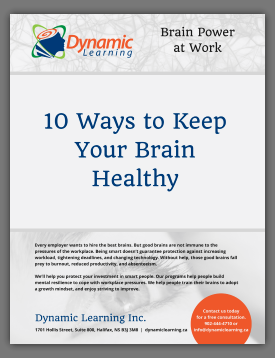If we were not living in an increasingly diverse world, and if we had not already found that diverse teams outperform homogeneous teams, all this hype about the unconscious bias would be redundant.
However, we do know that having different perspectives at a table makes for better decisions. And we also see, feel, and hear that the world around us is changing.
If you have not already guessed it, we are talking about diversity and inclusion as a business and social strategy to recruit, maintain, and develop talent. Because only with a diverse and integrated workforce, will an organization be able to compete today. And only with a diverse and integrated education system, will our children be ready for today’s world.
But what about the unconscious bias?
Imagine this:
- A party with people from all walks of life attending. That is diversity.
- Inviting them to dance. That is inclusion.
- Recognizing that you make assumptions based on rhythms, lyrics, volume, and so on. That is exploring your unconscious bias towards music.
And if you come to the conclusion that your unconscious belief “how music should be” can affect whether people will dance or not, you have just proven to yourself that you are open to exploring unconscious biases.
This article will provide you with a definition, a scenario where unconscious bias can be harmful, a book recommendation, and we conclude with a Harvard study that lets you assess your own unconscious biases at home.
So, what is it?
Unconscious biases, otherwise known as implicit biases, are inherent or learned stereotypes about people and things (including music) that everyone forms without realizing it. Unconscious biases are social stereotypes about an individual, group or institution and the things associated with them. Everyone has unconscious biases – and they are often not aligned with one’s conscious values. (Source: https://learn.g2.com/unconscious-bias)
Unconscious biases are far more prevalent than conscious prejudice and, as the definition states, often incompatible with one’s conscious values. Certain scenarios can activate unconscious attitudes and beliefs. For example, biases may be more prevalent when multi-tasking or working under time pressure.
For example, when reading a National Geographic on Women’s Health in the January 2020 edition, I noticed this paragraph.
“Even with Meredith’s advanced degrees (and as Chief of Surgery) – though she introduces herself with the title doctor, wears the white coat, and sports a visible stethoscope – she is regularly referred to as a nurse while going about her hospital business. And it there’s a male medical student in the room when she makes rounds, patients will often tell their story to him instead of her. Stereotypes and bias are a real part of women’s lives, and gender bias is a real problem in medicine.”
As tribal human beings, we tend to be biased toward people most like ourselves and to be biased against people who are different. In addition, we tend to believe without question what people in “our tribe” say and write. Powerful people are well aware of this tendency and some use it dishonestly to promote themselves and belittle others.
I have just finished reading How to be an Anti-Racist by Ibram X. Kendi. I found the book fascinating and life-changing.
Once we have some understanding of unconscious or implicit bias, what can we do to identify and then change some of our own unconscious biases?
Harvard University’s Implicit Association Test (IAT) was created in 1998 to measure and detect a person’s unconscious/implicit biases. These biases primarily have to do with race; however, the test can also be used to measure biases in relation to sexual orientation, gender, age, and other categories. The Implicit Association Test proves that the answer might be more complicated than you think. This test is not considered the perfect measurement of implicit bias or prejudice throughout the country but it may offer some insight into how we associate groups of people with different traits, behaviours, and feelings. (Source: https://practicalpie.com/implicit-association-test/)
You can select an Implicit Association Test (IAT) from a list of possible topics on this Harvard University website. Then you can take a training course or do some reading to help yourself to:
- Identify biases and increase self-awareness.
- Develop intercultural learning as an essential leadership skill.
- Prioritize your cultural values and strengths.
- Improve the quality of your decision-making by applying intercultural perspectives.
- Use a rational approach to management in a multicultural environment.
- Listen to understand from the speaker’s point of view.
- Reduce intercultural misunderstanding and conflict.
- Appreciate the advantages of having a diverse workplace.
- Recognize and change systems that create barriers for those from different cultures.
- Reinforce your new understanding with deliberate, persistent action.


